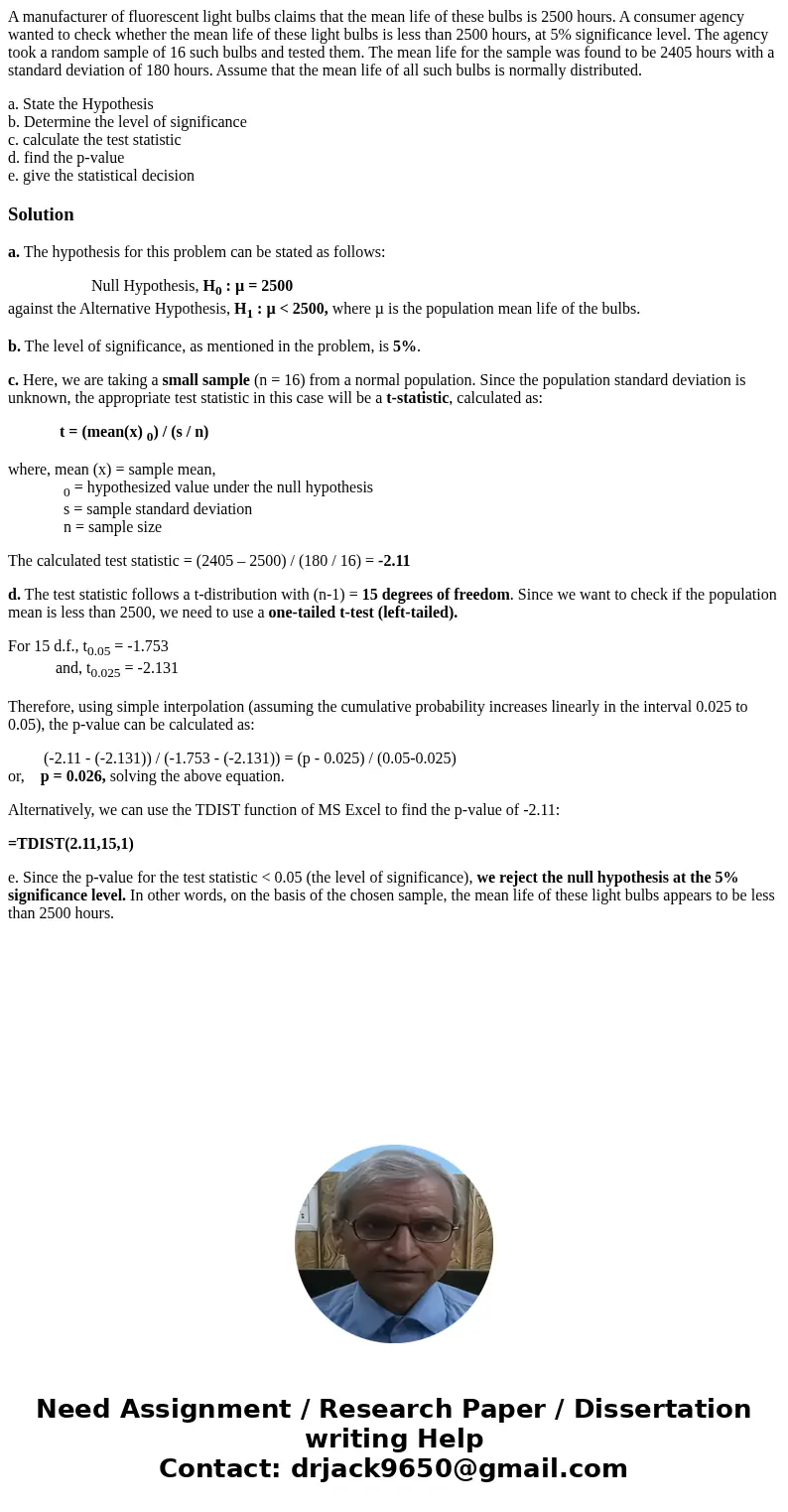A manufacturer of fluorescent light bulbs claims that the me
A manufacturer of fluorescent light bulbs claims that the mean life of these bulbs is 2500 hours. A consumer agency wanted to check whether the mean life of these light bulbs is less than 2500 hours, at 5% significance level. The agency took a random sample of 16 such bulbs and tested them. The mean life for the sample was found to be 2405 hours with a standard deviation of 180 hours. Assume that the mean life of all such bulbs is normally distributed.
a. State the Hypothesis
b. Determine the level of significance
c. calculate the test statistic
d. find the p-value
e. give the statistical decision
Solution
a. The hypothesis for this problem can be stated as follows:
Null Hypothesis, H0 : µ = 2500
against the Alternative Hypothesis, H1 : µ < 2500, where µ is the population mean life of the bulbs.
b. The level of significance, as mentioned in the problem, is 5%.
c. Here, we are taking a small sample (n = 16) from a normal population. Since the population standard deviation is unknown, the appropriate test statistic in this case will be a t-statistic, calculated as:
t = (mean(x) 0) / (s / n)
where, mean (x) = sample mean,
0 = hypothesized value under the null hypothesis
s = sample standard deviation
n = sample size
The calculated test statistic = (2405 – 2500) / (180 / 16) = -2.11
d. The test statistic follows a t-distribution with (n-1) = 15 degrees of freedom. Since we want to check if the population mean is less than 2500, we need to use a one-tailed t-test (left-tailed).
For 15 d.f., t0.05 = -1.753
and, t0.025 = -2.131
Therefore, using simple interpolation (assuming the cumulative probability increases linearly in the interval 0.025 to 0.05), the p-value can be calculated as:
(-2.11 - (-2.131)) / (-1.753 - (-2.131)) = (p - 0.025) / (0.05-0.025)
or, p = 0.026, solving the above equation.
Alternatively, we can use the TDIST function of MS Excel to find the p-value of -2.11:
=TDIST(2.11,15,1)
e. Since the p-value for the test statistic < 0.05 (the level of significance), we reject the null hypothesis at the 5% significance level. In other words, on the basis of the chosen sample, the mean life of these light bulbs appears to be less than 2500 hours.

 Homework Sourse
Homework Sourse